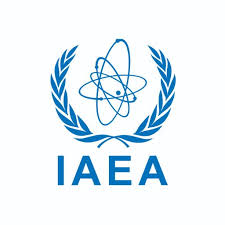IAEA broadening range of partners in support of nuclear verification mission
“These partnerships are placing at the IAEA’s disposal a broadened pool of support,” said Massimo Aparo, IAEA Deputy Director General and Head of the Department of Safeguards.

To complement the longstanding support from its Member States, the IAEA is now broadening its range of partners in support of its nuclear verification mission. Such partners include civil society organizations, foundations, academia and the private sector.
“These partnerships are placing at the IAEA’s disposal a broadened pool of support,” said Massimo Aparo, IAEA Deputy Director General and Head of the Department of Safeguards. “This wider network of expertise can foster innovation, such as suggesting new ways to adapt to the dynamically changing environment for our verification mission.”
IAEA safeguards are technical measures embedded in safeguards agreements, which are implemented by the IAEA to provide the international community with assurances that nuclear material remains in peaceful use.
Non-traditional partnerships established
To date, the IAEA has formalized arrangements with five organizations in this area and more are expected in coming months. To date, arrangements have been signed with the Institute of Nuclear Materials Management (INMM), the European Safeguards Research and Development Association (ESARDA), Rosatom Technical Academy (RTA), the Center for Energy and Security Studies (CENESS), and the Verification Research, Training and Information Center (VERTIC).
The first such arrangements, signed in August 2021, cemented the long history of cooperation between the IAEA and INMM, and ESARDA. The IAEA will collaborate with INMM and ESARDA to promote effective nuclear materials management, share experience and knowledge, and promote best practices to address safeguards challenges. The partnership arrangements also provide the framework for the organizations to build safeguards capacity, address emerging technologies with potential implications for safeguards, explore advancements in verification and monitoring techniques, and work toward gender parity in the field of nuclear verification. As in previous years, the INMM and ESARDA will also participate as cooperating organizations in the 2022 Symposium on International Safeguards.
In September, the IAEA also formalized its longstanding partnership with Rosatom Technical Academy. Rosatom Technical Academy is already an IAEA Collaborating Centre in three different programmatic areas: nuclear sciences and applications, nuclear security, and nuclear energy. By expanding the partnership to the field of nuclear verification, cooperation will focus on inspector training, instrumentation research and development, and safeguards capacity building for IAEA Member States.
In November, the IAEA signed a partnership agreement with the Moscow-based thinktank, Center for Energy and Security Studies (CENESS). It will work with CENESS to encourage international dialogue on global and regional non-proliferation issues. The partnership will also promote exchange among experts on innovative ideas to strengthen safeguards and the peaceful use of nuclear energy and nuclear technologies.
Most recently, in early December the IAEA and VERTIC signed practical arrangements to cooperate in building States’ knowledge and capabilities in safeguards using innovative learning methods and in monitoring the domain of emerging technologies with potential safeguards implications. The future and benefits of non-traditional partners The implementation of IAEA safeguards faces numerous challenges. These include the emergence of new technologies which have potential implications for nuclear non-proliferation. The new partnership arrangements will promote common thinking to address such challenges in novel ways and facilitate the adaptation of nuclear verification in line with future needs. The new partnership arrangements aim to provide support to IAEA safeguards, especially in the areas detailed in the Research and Development Plan for Safeguards.
“The Safeguards Research and Development Plan is the primary vehicle through which we communicate our safeguards support needs,” said Jenni Rissanen, Team Leader of the Strategic Planning and External Coordination Section in the IAEA Department of Safeguards. “These new partnership arrangements will allow proactive and transparent communication with non-traditional stakeholders to help mobilize expertise and resources toward addressing our most pressing support needs.”
Find out more about the work of IAEA Safeguards and other initiatives with which the Agency is working to ensure safeguards continuity into the future, such as the Emerging Technologies Workshop.
- READ MORE ON:
- Massimo Aparo
- IAEA
- Rosatom Technical Academy
- Jenni Rissanen










